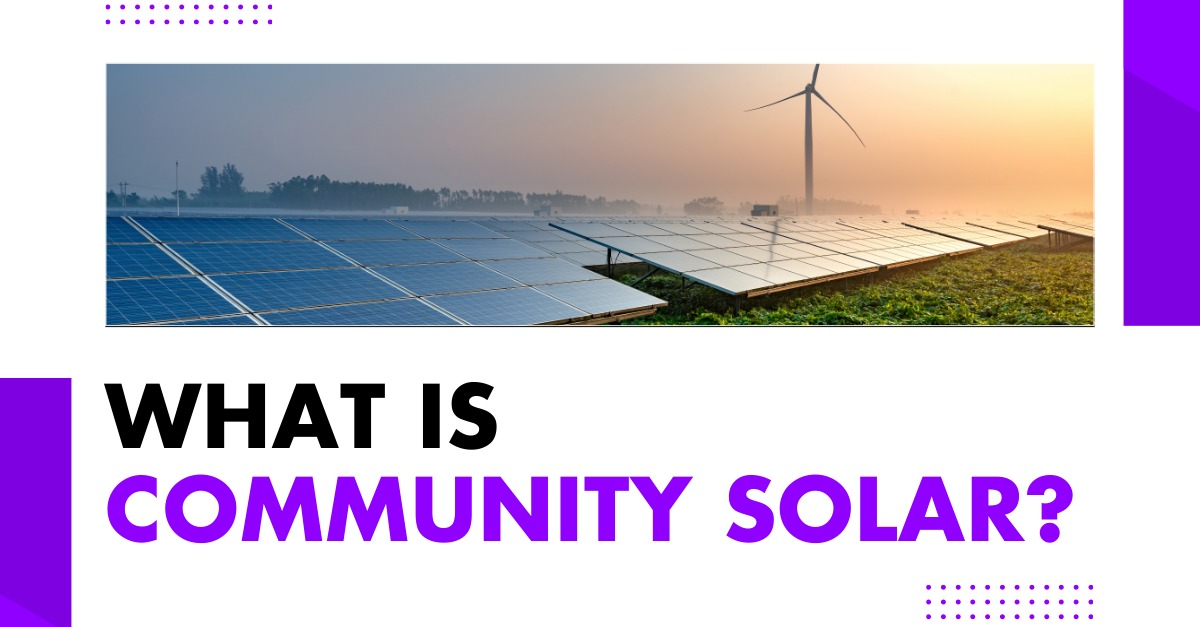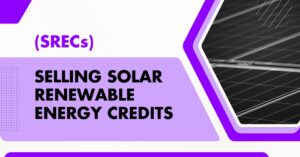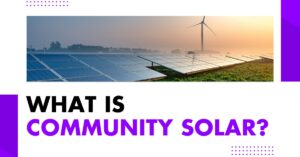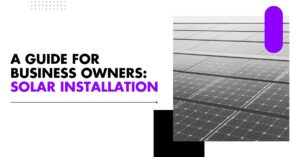Community Solar: What It Is, How It Works, and Why You Should Care

Community Solar: What It Is, How It Works, and Why You Should Care
These days, it seems like just about everyone is talking about making the switch to solar energy. It’s clean. It’s renewable. It’s better for the planet.
But what if installing solar panels on your roof just isn’t in the cards? Maybe you rent. Perhaps your roof is old and just not up to the job.
You’re not out of options. In fact, that’s where community solar steps in. It’s an innovative way to make solar power more accessible for everyone, no matter where you live or what kind of home you have.
But what is community solar, how does it work, and why is it an option worth considering? Let’s talk about it.
What is Community Solar?
Community solar refers to solar energy projects or purchasing programs that share their benefits among multiple subscribers in a (you guessed it) community.
Unlike traditional rooftop solar, in which the panels sit directly on your home, community solar projects are built at an off-site location. These powerhouses send their energy straight to the grid, and then you “subscribe” to a portion of it. You get all the perks of solar (like cleaner energy and cost savings) without needing to own or install your own system.
Community solar is a win-win for anyone who can’t or doesn’t want to install their own solar panels. Again, renters, the owners of shady or unconventional roofs, and even folks who can’t afford the upfront cost of installing renewables are all prime candidates for these kinds of programs, which democratically open the door to clean energy for practically everyone.
Aside from benefiting you at the individual level, community solar also benefits the community and local businesses. By participating, you are doing your part to reduce carbon emissions and build a greener future. And if you’re a business or nonprofit, adding solar to your portfolio can create goodwill, attract eco-conscious consumers, and deliver tangible cost savings.
Furthermore, supporting these installations, whether as a homeowner or a business owner, means you’re contributing to local economic growth. Community solar projects create jobs in construction, maintenance, and engineering, keeping dollars circulating in your area.
How Does Community Solar Work?
Many people are hesitant to sign up for community solar, fearing that the process is complex and involves directly connecting their household electrical supply to a solar array in some way, shape, or form.
In reality, it’s nothing like that. The process is quite easy. Here’s what it involves.
1. Construction of the Array
Chances are, this part has already been done in your area if community solar is an option that’s on the table for you. Essentially, a large field of solar panels is constructed (often referred to as a “solar farm”) and it gathers energy from the sun. There’s nothing you need to do to support this process at all.
2. Energy Goes to the Grid
Once the panels are in place and the solar farm is online, the energy that the panels produce flows directly into the local utility’s power grid, generally co-mingling with electricity from other sources.
3. Subscribers Join
Next, you sign up as a subscriber. You may receive a postcard in the mail or see advertisements on social media (or even directly from your electricity provider) encouraging you to sign up.
If you choose to do so, you’ll claim a portion of the solar electricity that’s proportional to your energy needs.
Signing up is often as easy as providing information about your monthly utility bill, along with information like your name, address, telephone number, and so on. There are few hoops to jump through; signing up for community solar is a process so easy it can be done from your phone or sitting on your couch while you’re watching your favorite reruns.
4. Enjoy the Benefits
Once you’re signed up and the community solar farm is up and running, all you have to do is sit back and wait for the savings.
Each company differs slightly in how these savings are applied, but in most cases, you’ll get a credit on your utility bill for the energy generated by your “share” of your solar power. In some cases, you’ll pay the solar company directly, and they will pay the utility bill for you (with the credit for the solar taken out).
Ultimately, the process is easy, and it generally results in lower electricity costs along with that warm-and-fuzzy feeling of doing your part to protect the planet.
It may be helpful to think of community solar as a subscription that pays you back over time, rather than something that saves you boatloads of cash instantaneously. Rather than buying your electricity the traditional way, you’re essentially prepaying for clean energy at a more predictable rate. Those savings show up as credits on your utility bill, often reducing costs over time.
Of course, the other added bonus of this approach is that installation, maintenance, and repairs are all handled for you, so you can enjoy the full benefits of solar energy with complete peace of mind.
Why Choose Community Solar?
You might be wondering, “But why go through all this effort if I’m fine with my regular utility service?” Let’s walk through it again:
Breaking Down Barriers
Nearly 50% of households and businesses can’t host rooftop solar systems. Maybe the home is rented, the roof is too shady, or the costs are simply intimidating.
Whatever the case may be, community solar shatters all these barriers, letting people participate in the clean energy revolution regardless of homeownership or roof suitability.
Then, of course, there are the broader perks:
- Lower Energy Bills: Every bill credit gets you closer to serious savings.
- Resilience in Adversity: Community solar can provide stability during power outages or severe weather.
- Boosting the Local Economy: Solar projects bring good-paying jobs to your town.
- Feel-Good Green Energy: You’re actively reducing your carbon footprint and combating climate change.
If you’ve been on the fence about solar, community solar makes the leap easier—and far less costly.
Consumer Protections in Community Solar
Before you jump on board, it’s worth checking out the safety nets that are available for subscribers.
Like any reputable business, community solar programs tend to have policies and safeguards in place to protect their participants and make sure savings are delivered as promised. Keep an eye out for these helpful features:
- Guaranteed Savings: Most reliable programs ensure savings of at least 20% on your energy bills.
- No Hidden Fees: Avoid surprise charges like exit fees or sign-up fees.
- Transparency: Subscription details should be clear, straightforward, and available in plain language.
- Complaint Mechanisms: There should be robust systems in place to handle any grievances.
One more pro tip? Always review the fine print and check your state’s guidelines. Not all programs are created equal, so it’s worth doing your homework.
Where is Community Solar Available?
Where can you find community solar projects?
Almost everywhere. Community solar projects exist in 44 states and Washington, D.C. It’s also worth noting that states with “enabling legislation” are leading the charge by paving the way for more accessible programs.
What’s more, many states adopt policies specifically designed to include low-income households, offering direct financial assistance or tiered subscription options. If affordability is a concern for you, don’t write off community solar just yet.
Not sure where to begin? Here are a couple of handy resources:
Your local utility can also point you in the right direction, so don’t hesitate to give them a call.
Community Solar and Multifamily Housing
If you live in an apartment or a condo, you might think solar energy has nothing to offer you.
Wrong! Community solar is particularly useful for people in multifamily housing.
Large solar arrays located at off-site locations (or even on the rooftop of a multifamily building) can supply renewable energy to all residents. This often translates to direct bill savings for tenants and even indirect benefits, like property-wide energy efficiency improvements.
The U.S. Department of Housing and Urban Development has even issued guidelines to make sure utility allowances aren’t negatively impacted for low-income residents.
The Bright Future of Community Solar
There you have it. Community solar offers a practical, affordable way for almost anyone to tap into the unyielding power of the sun.
Whether you’re looking to save on electricity, support your local economy, or reduce your carbon footprint, this innovative model has you covered.
But don’t stop here. Learn more about how you can become part of a community solar project and start making a difference.
Schedule a call with IE Construction today to explore your options or learn more about how you can subscribe to a program. The future of energy is bright. It’s time for you to be a part of it.




